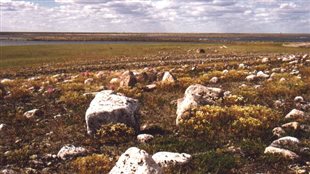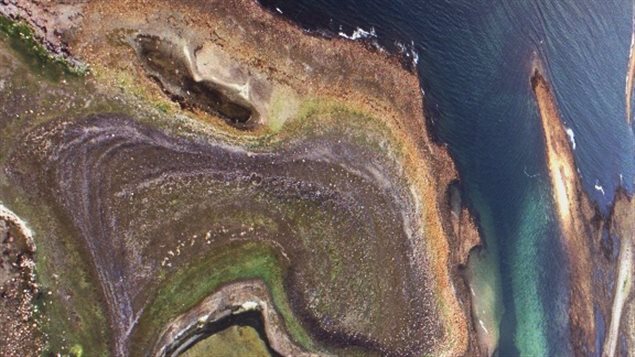Researchers will need armed guards against polar bears when they head to a remote site in northern Manitoba to investigate the remains of a one-thousand year old, aboriginal hunting site next week. The area is on the shore of Hudson Bay and a river. It provides a panoramic view and has abundant wildlife, including caribou on land, fish in the river, and seals and whales in the ocean.

Overflying the area back in 1997, archeologist Virginia Petch says the site “jumped out” at her. She could clearly see the remains of 22 tent rings. A quick visit also revealed some stone-lined holes where food was stored and stone rests for the purposed of drying kayaks, the vessels they used in hunting.
Listen‘The menu was us’
That visit had to be quick, says Petch, “There was a group of about six (polar bears) that were meandering over to check out the menu…the menu being us. It’s a little unnerving when your bear guard has his gun ready and the helicopter pilot’s got his helicopter revving while you’re trying to do a very quick survey count of different kinds of features.”
‘A seafaring people…with rich oral tradtion’
That quick look indicated those who used the site were likely Thule, ancestors of the northern aboriginal group now called Inuit. “They were a seafaring people,” says Petch. “They’re known best for their hunting of bowhead whales. But there were other sea mammals that they did hunt. They had a rich oral tradition and built big boats and were very successful in populating the northern part of Canada.”

The tent rings are huge and some intersect, suggesting that extended families may have lived in them. There are some 22 tent rings that could yield artefacts giving clues as to how the people lived. The expedition will last seven days, with researchers travelling one-and-a-half hours every day by inflatable vessel to get from a lodge to the site. And yes, they will have several armed polar bear guards.







For reasons beyond our control, and for an undetermined period of time, our comment section is now closed. However, our social networks remain open to your contributions.